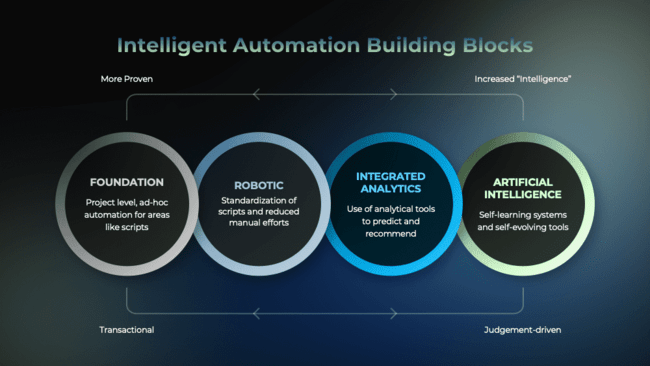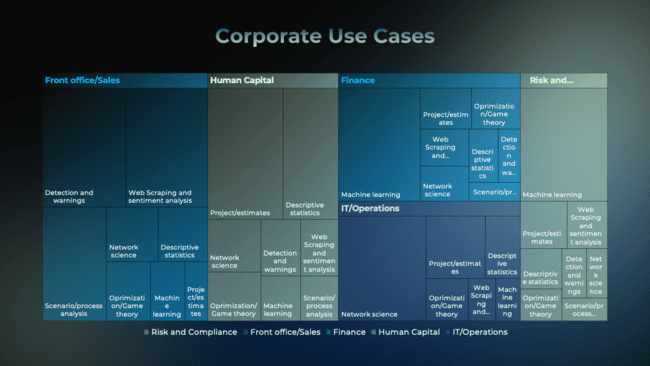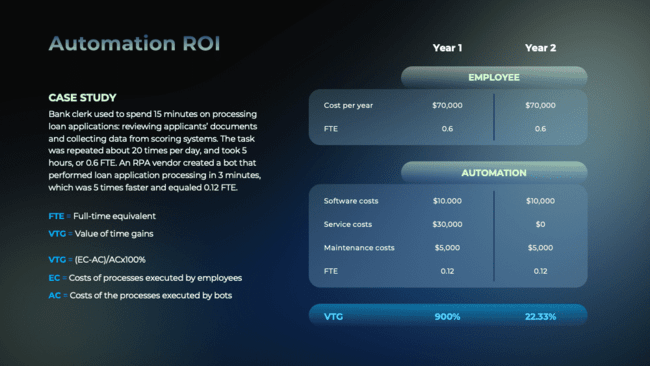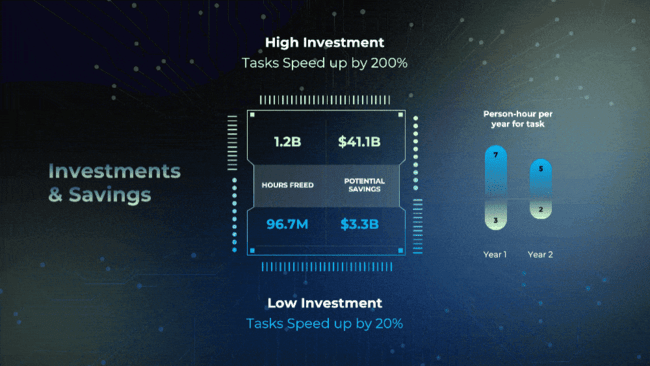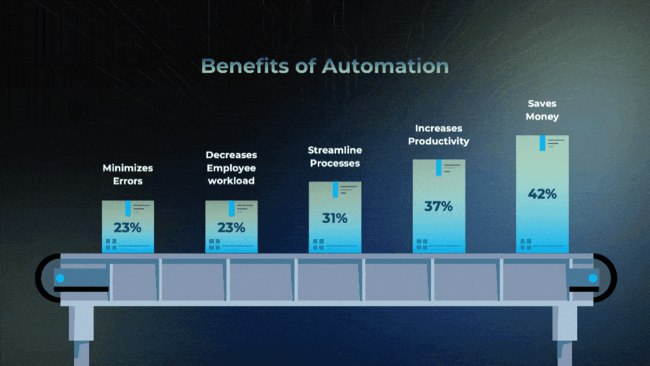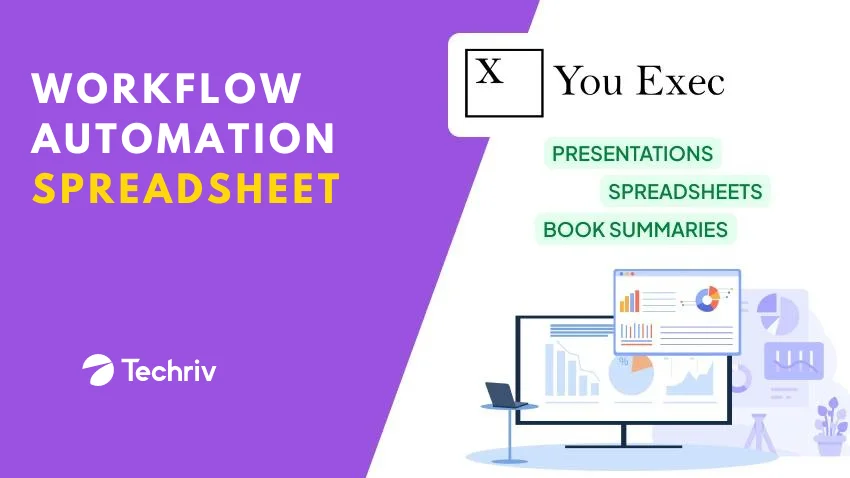
Workflow Automation Presentation – Free Template Download
- Techriv
- April 15, 2024
- Entrepreneurship
- 0 Comments
Introduction:
In today’s fast-paced digital age, the landscape of business operations is undergoing a seismic shift. Central to this transformation is the concept of Workflow Automation Presentation, leveraging the power of Artificial Intelligence (AI) and Machine Learning (ML) to redefine business efficiency. This blog post explores the profound impacts of Workflow Automation across industries, from strategic transformation to financial gains and supply chain optimization, illuminating the path towards a future where innovation and growth are driven by intelligent automation technologies.
Download this presentation:
Download Powerpoint PPT
Download Google Slides
Download Apple Keynote
Preview
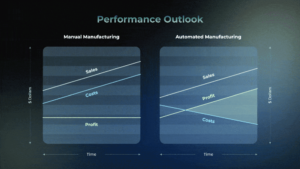
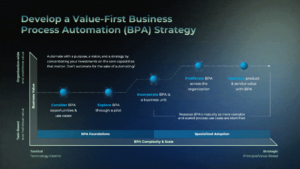



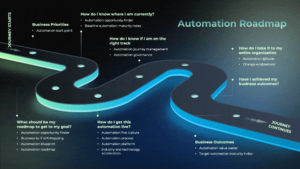
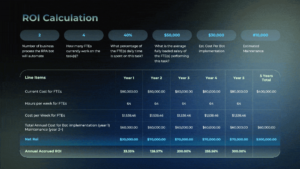
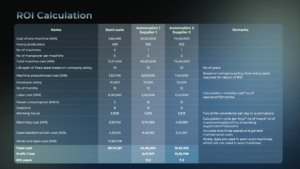
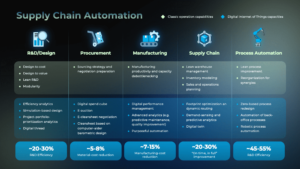

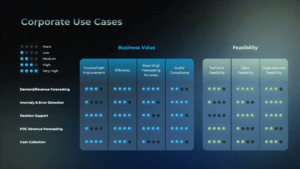
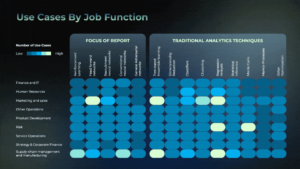
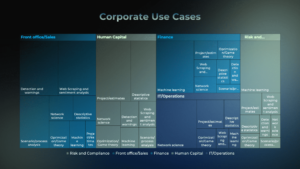
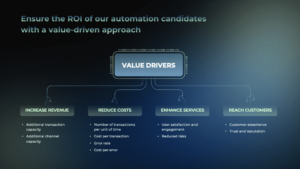



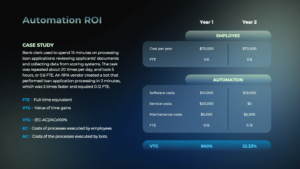
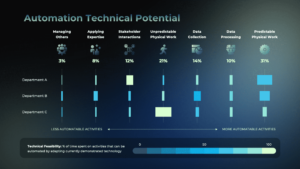


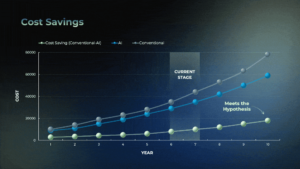

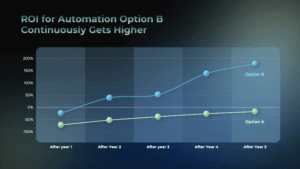

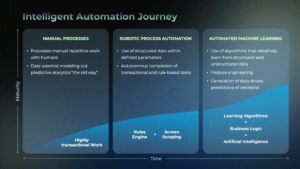
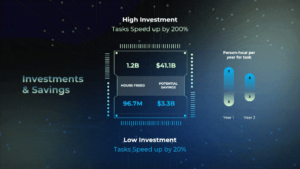

Download this presenation:
Download Powerpoint PPT
Download Google Slides
Download Apple Keynote
Embracing Strategic Transformation
The journey towards effective business process automation begins with a meticulous strategization. It’s essential for businesses to conduct a thorough analysis to pinpoint repetitive, mundane tasks that are ripe for automation. By harnessing the power of AI and ML algorithms, organizations can not only automate these tasks but also anticipate future market trends, make informed decisions backed by data, and fine-tune their processes to achieve unparalleled efficiency. A robust automation strategy goes beyond mere task simplification; it’s about transforming the entire operational blueprint to ensure optimal resource utilization and maximum output.
Automation Roadmap PPT
An Automation Roadmap is a strategic plan outlining the implementation and deployment of automation technologies within an organization. It serves as a guide for systematically integrating automation solutions into various business processes to achieve specific goals and objectives. Here’s a breakdown of what an Automation Roadmap typically entails:
- Assessment and Planning: The roadmap begins with a thorough assessment of existing processes and workflows to identify areas where automation can yield the most significant benefits. This involves evaluating tasks for their suitability for automation, understanding dependencies, and assessing potential risks and challenges.
- Goal Setting: Clear objectives and key performance indicators (KPIs) are established to define the desired outcomes of automation initiatives. These goals should align with the organization’s overall strategic objectives and focus on improving efficiency, reducing costs, enhancing quality, or other relevant metrics.
- Technology Selection: Based on the identified automation opportunities and goals, the roadmap outlines the selection of appropriate automation technologies and tools. This may include robotic process automation (RPA), artificial intelligence (AI), machine learning (ML), workflow automation platforms, or other specialized software solutions.
- Pilot Projects: To validate the effectiveness of selected automation solutions and mitigate risks, pilot projects are often conducted in controlled environments or specific departments. These pilot projects allow for testing and refinement of automation workflows before broader implementation.
- Implementation: With successful pilot projects, the roadmap outlines the phased implementation of automation solutions across the organization. This involves detailed planning of deployment schedules, resource allocation, training programs, and change management strategies to ensure smooth adoption by employees.
Revolutionizing Corporate Sectors
The transformative power of workflow automation presentation is evident across various corporate sectors, each harnessing its capabilities to address unique challenges and optimize specific processes:
Finance:
Beyond the already mentioned benefits, the financial sector is leveraging automation for tasks like real-time transaction monitoring, ensuring compliance with ever-evolving regulations, and automating tax computations. Advanced AI-driven financial models can also predict market movements, allowing for proactive investment strategies.
Human Resources:
The automation in HR extends to performance management, where AI algorithms analyze employee performance metrics to provide unbiased reviews. Additionally, automated learning and development platforms can curate personalized training modules for employees, ensuring continuous skill enhancement.
Customer Service:
Advanced AI-driven customer service tools can analyze customer feedback in real-time, allowing businesses to address concerns proactively. Automation also plays a role in after-sales service, where systems can track product lifecycles and notify customers about maintenance or upgrades.
Marketing:
Automation tools, powered by AI, can analyze vast amounts of consumer data to predict purchasing behaviors, allowing for targeted marketing campaigns. Automated content creation tools also enable businesses to create personalized content for different audience segments.
Manufacturing:
Automated assembly lines, quality control systems, and predictive maintenance tools are revolutionizing manufacturing processes, ensuring higher product quality and reduced downtimes.
Download this presentation template:
Download Powerpoint PPT
Download Google Slides
Download Apple Keynote
Automation ROI Template
Automation ROI measures the financial benefits gained from implementing automation solutions against the costs incurred, assessing factors such as upfront implementation costs, operational savings through increased efficiency and productivity, revenue generation opportunities, quality improvements, risk mitigation, and time savings. By evaluating these elements, organizations can determine whether the return on investment justifies the expenditure, demonstrating the value of automation in driving sustainable business growth and competitiveness.
Financial Advantages
The financial benefits of workflow automation are vast and multifaceted, extending well beyond the immediate labor cost reductions. One of the primary advantages is the significant reduction in errors. Automated systems, being devoid of human inconsistencies, ensure tasks are executed with unparalleled precision.
This meticulousness drastically reduces the costs associated with rectifying mistakes, whether they arise in product manufacturing, financial transactions, or simple data entry.
Moreover, in sectors like manufacturing, automation plays a pivotal role in optimizing energy usage. By ensuring machines and systems operate at peak efficiency, businesses can realize substantial savings in electricity and fuel costs. This energy optimization is not just about cost savings; it also aligns with the global push towards sustainability and reduced carbon footprints.
Realizing Returns on Investment
The ROI from workflow automation is multi-dimensional, reflecting its impact on various facets of business operations:
- Productivity: The 24/7 operational capability of automated systems ensures a continuous workflow, leading to higher outputs in shorter timeframes. This increased productivity can lead to faster product launches, quicker service deliveries, and an overall accelerated business cycle.
- Performance: With automation, businesses can achieve a higher degree of precision and consistency in their operations. This enhanced performance can lead to better product quality, higher customer satisfaction rates, and an improved brand reputation.
- Financial Gains: The direct and indirect financial benefits of automation combine to offer a compelling ROI. Direct savings come from reduced labor costs, energy savings, and resource optimization. Indirect gains can be realized through increased sales due to improved product quality, reduced time-to-market, and enhanced customer satisfaction.
- Competitive Advantage: In today’s competitive landscape, the agility and efficiency offered by automation can provide businesses with a distinct edge, allowing them to respond to market changes swiftly and innovate continuously.
Download this presentation template:
Download Powerpoint PPT
Download Google Slides
Download Apple Keynote
Benefits of Automation PPT
The benefits of automation are extensive and encompass various aspects of business operations, including:
-
Increased Efficiency: Automation streamlines processes, reduces manual effort, and minimizes errors, leading to higher productivity and faster turnaround times.
-
Cost Savings: By optimizing resource utilization, reducing labor costs, and minimizing operational errors, automation can result in significant cost savings for organizations.
-
Improved Accuracy and Consistency: Automated systems ensure tasks are executed with precision and consistency, reducing the likelihood of errors and enhancing overall quality.
-
Enhanced Productivity: Automation enables 24/7 operation, accelerates decision-making processes, and frees up employees to focus on high-value tasks, driving overall productivity gains.
-
Better Decision Making: With access to real-time data and analytics, automation facilitates data-driven decision-making, allowing organizations to respond quickly to changing market conditions and make informed strategic choices.
-
Customer Satisfaction: Automation improves response times, enhances service quality, and enables personalized interactions, leading to higher levels of customer satisfaction and loyalty.
-
Competitive Advantage: Organizations that embrace automation gain a competitive edge by being more agile, innovative, and efficient, allowing them to outperform competitors and seize market opportunities.
-
Risk Mitigation: Automation reduces the risk of human error, compliance violations, and security breaches, enhancing operational reliability and resilience.
-
Scalability: Automated systems can easily scale to accommodate growing business needs and fluctuations in demand, ensuring flexibility and adaptability in dynamic environments.
-
Employee Satisfaction: Automation eliminates tedious, repetitive tasks, allowing employees to focus on more meaningful and creative work, leading to higher job satisfaction and morale.
Workflow Automation Template
Streamline your business processes and unlock unparalleled efficiency with our comprehensive Workflow Automation Presentation Template. Designed to harness the power of Artificial Intelligence (AI) and Machine Learning (ML), this template guides you through the strategic identification of tasks ripe for automation, enabling you to optimize resource utilization and maximize output. From finance to human resources, customer service to marketing, and manufacturing to supply chain management, our template empowers you to revolutionize operations across diverse corporate sectors. Say goodbye to manual errors and hello to accelerated productivity as you embrace the transformative potential of Workflow Automation Presentation.
Conclusion:
In essence, workflow automation presentation, supercharged by AI and ML, is the cornerstone of the future of business. As organizations delve deeper into the world of automation, they are poised to not only thrive in a competitive landscape but also to redefine the very essence of business efficiency, innovation, and growth.
Download Workflow Automation Presentation:
Download Powerpoint PPT
Download Google Slides
Download Apple Keynote
